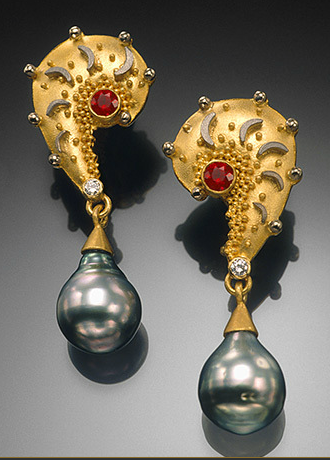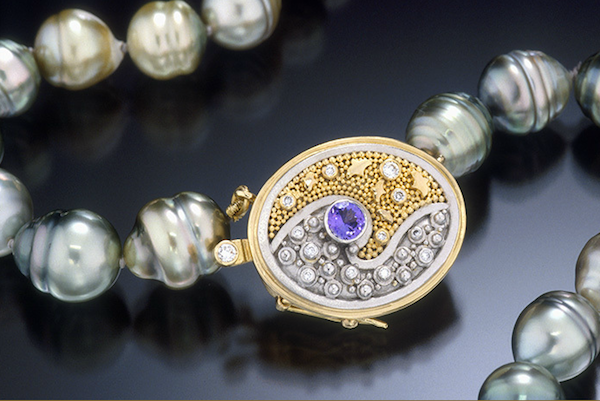 Much of Cornelia Goldsmith’s inspiration comes from nature – butterflies, trees and sea horses with a surrealistic twist. Branches sprout from a three-dimensional heart, cleaved down the middle and bleeding granulation.
Much of Cornelia Goldsmith’s inspiration comes from nature – butterflies, trees and sea horses with a surrealistic twist. Branches sprout from a three-dimensional heart, cleaved down the middle and bleeding granulation.
“I like the idea of having two layers in one design, nature combined with other realities—my own fantasies,” she says. “A lot of times, things come to me as I’m forming the metal.
“I’ll make a shape and then change it. That’s part of the process for me. It’s always exciting to work on a new design.”
Like a lot of her sculptural shapes, the heart was formed by die-forming, a process Cornelia Goldsmith discovered 12 years ago.
She had been producing and selling granulated gold jewelry for years from her studio in Sausolito. Searching for a way to add depth to her designs, she signed up for a three-day die-forming workshop with Lee Marshall in 1995.
It was exactly what she was looking for.
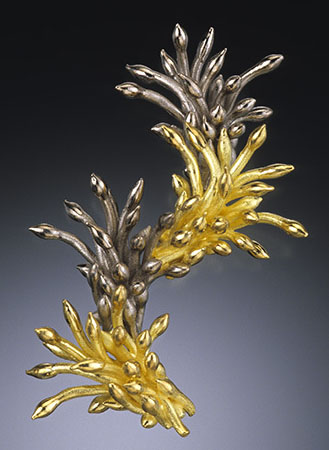
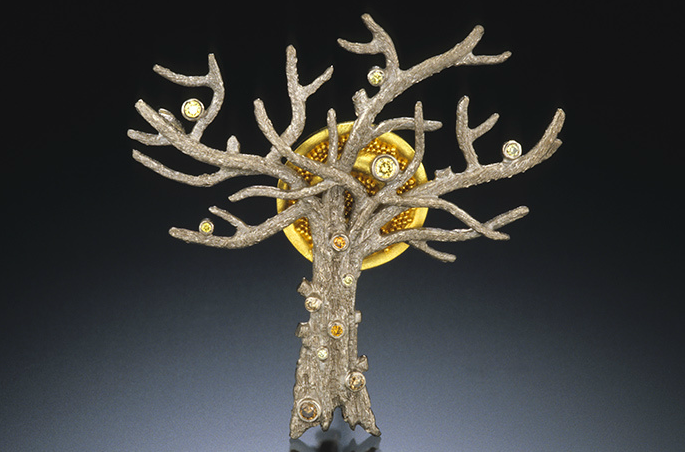
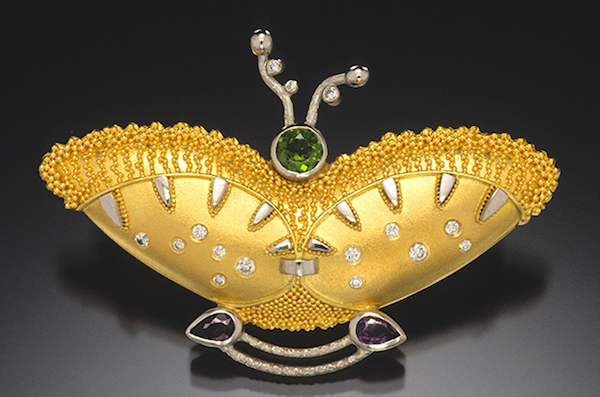 Pendant/brooches by Cornelia Goldsmith: “Winter Tree” of white & yellow gold and fancy-colored diamonds and “Butterfly” of 18k & 22k gold, platinum, tsavorite, purple sapphires, and diamonds
Pendant/brooches by Cornelia Goldsmith: “Winter Tree” of white & yellow gold and fancy-colored diamonds and “Butterfly” of 18k & 22k gold, platinum, tsavorite, purple sapphires, and diamonds
“I like the idea of having two layers in one design, nature combined with other realities—my own fantasies.”
After experimenting with the process for three years, she began incorporating die-forming into her repertoire and it’s been a hallmark of her work ever since.
“Die forming is such an easy way for a jeweler to be creative and spontaneous,” says Goldsmith. “When I want to try something new, I can cut a die quickly from Plexiglass and experiment with shapes using brass scraps I have lying around.”

Since it can take weeks for Goldsmith to produce a form that measures up to the vision in her head, she usually experiments while working on other pieces. When she finds a shape she likes, she cuts it in several sizes. She has six versions of her basic teardrop, for example, although she uses only two.
When she finds herself reusing a particular form repeatedly, she sends it to a die cutter in to be laser-cut in steel. Earrings require separate mirror-image forms. Like most designers who use die forming, Goldsmith always has steel forms cut professionally for earrings in order to guarantee a matching pair. (It’s nearly impossible to do this via hand-sawed Plexiglass.)
Thanks to die-forming, she says, “I can be very creative without spending a lot of money.”
To see more of Cornelia Goldsmith’s jewelry, visit her site.
Related profiles:
Karen Gilbert: science and nature
Cornelia Goldsmith: nature with a twist

